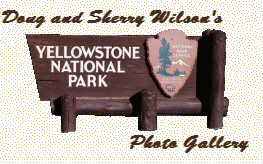
Page 2
| Home Page | Start | Previous | Next |

Page 2
Xanterra put us up at a campground in Gardiner for a few days while
we received our training. After getting the trailer set up in the campground,
we couldn't resist the temptation to go into Yellowstone Park to look for
wildlife.
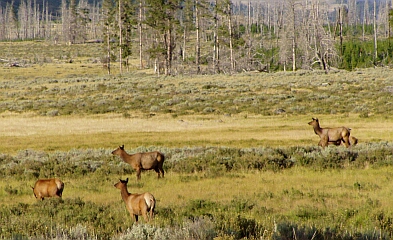 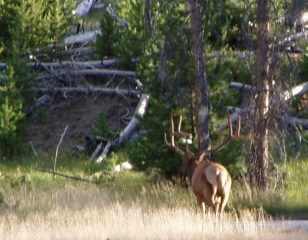  Elk sightings our first evening in Yellowstone. Also saw a couple of coyotes but were not able to get pictures. |
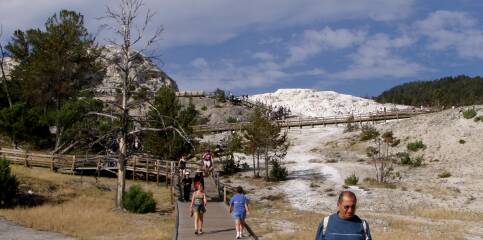 |
At Mammoth Hot Springs, geothermally heated water passes through limestone deep in the mountain. When the water emerges from the hillside as hot springs it cools and leaves behind the minerals it contains as travertine. This has been described as the mountain turning itself inside out. |
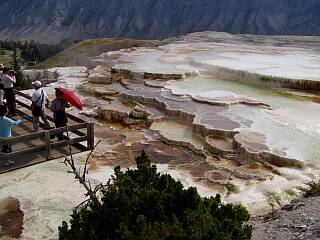 |
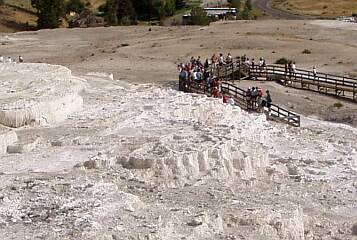 |
| Where springs are active, travertine
is deposited around the edges of cooling pools, building up walls and terraces.
The colors in active pools are due to algae that thrive in the springs'
hot water. |
The location and activity of the springs is
highly variable from year to year and even month to month. Inactive
areas dry out leaving stark white travertine behind as the algae die.
If it remains inactive for a number of years the clean
white ages to a dirty grey. |
 |
| The Mammoth Hot Springs townsite is situated
at the base of the travertine terraces. It was originally built to house
the US Army when it was garrisoned here prior to the formation of the National
Park Service, and currently serves as park headquarters. We took our
Xanterra training here. |
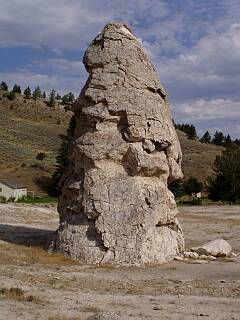 |
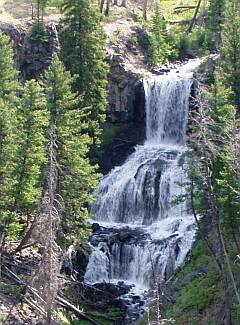 |
| The Liberty Cap is thought to have
been formed by a hot spring that built up higher and higher deposits until
it no longer had enough hydraulic pressure to emerge from the top. |
Undine Falls, east of Mammoth
Hot Springs. |
Text and images Copyright © 2003, F D Wilson
| Home Page | Start | Previous | Next |